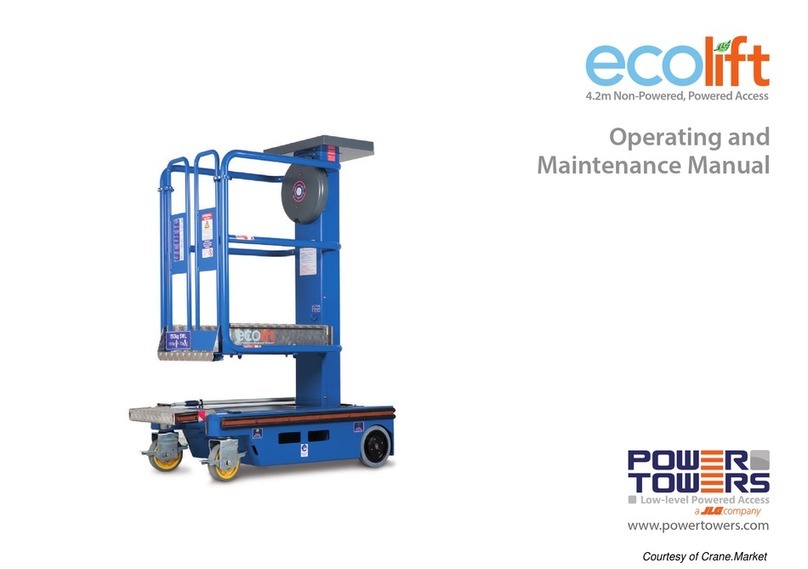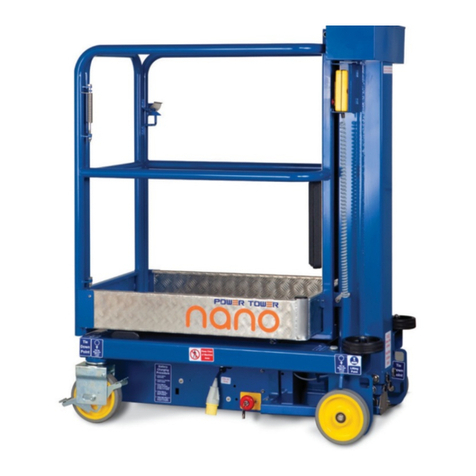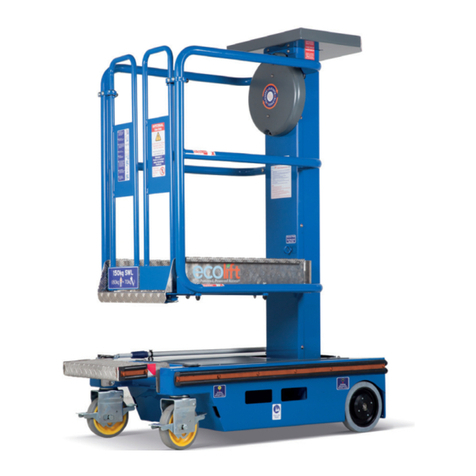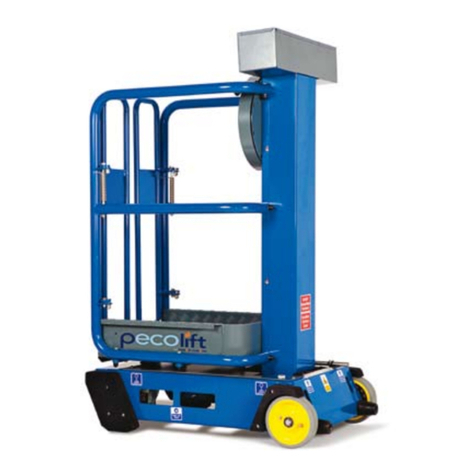4
DO’S and DON’TS
DO’S
1. Read, understand and adhere to the instructions on the machine
and in this manual.
2. Ensure pre-operation checks and operations are carried
out in the manner described.
3. Use only on hard, level surfaces able to support the weight
of the machine (e.g. concrete oor, tiled oor, hard wood
oor).
4. Use the machine internally only.
5. Ensure operator is t and does not suer from a fear of
heights.
6. Ensure the machine is correctly positioned with castor brakes on.
7. Ensure guardrail gate is closed and latched before elevation.
8. Ensure work area around the machine is cordoned o
from pedestrians and other trac.
9. Ensure operator is wearing the correct safety equipment.
10. Ensure the platform is correctly positioned so as not to
come into contact with xed or moving objects.
11. Ensure that the safe working load is evenly distributed
on the platform.
12. Never leave the machine unattended without the castor
brakes on.
DON’TS
1. Never exceed the safe working load 200kg (1 person plus tools).
2. Never use the machine on sloping or uneven ground.
3. Never use the machine as a goods lift or crane.
4. Never exceed horizontal forces (maximum horizontal force 200N).
5. Never use in the vicinity of live conductors.
6. Never try to move the machine on its castors when elevated.
7. Never extend the height of the platform by using boxes,
steps, ladders etc.
8. Never modify the machine in any way without the full written
approval of the manufacturer.
9. Never attempt to enter or exit the platform unless it is
fully lowered.
10. Never operate the machine outdoors, or anywhere it may be aected
by wind
11. Never ax the pendant controller to the guardrails or toolbox
area of the platform; stow in its holster when not in use.
12. Never use the machine in an explosive environment.
13. Never use the machine if fatigued.
14. Never use the machine inappropriately or for ‘horseplay.’
15. Never use the machine if under the inuence of drugs or alcohol.
16. Never use the machine if suering from poor health or using
medication which might impair the safe operation of the machine.
17. Never use the machine if vision impaired by bright lighting.
18. Never push the machine on sloping surfaces without the use of a
safe method.
19. Never push or pull objects with the platform.
20. Never use on uneven surfaces
21. Never attach loads such as boards or pipes outside the guardrails
unless authorised to do so by the manufacturer. Never carry materials
directly on the platform guardrails unless approved by
Power Towers Ltd.
22. Never use a malfunctioning machine.
































